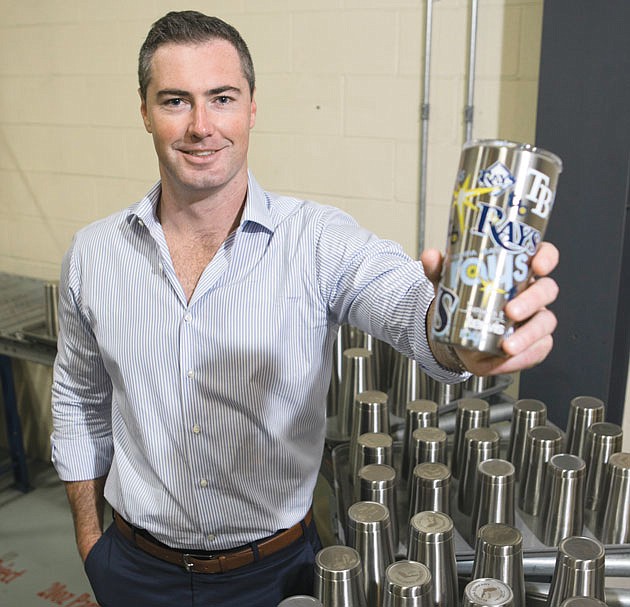- April 4, 2025
-
-
Loading

Loading

A group of Tervis employees have spent the past few weeks buzzing around some shiny new machinery tucked away in a corner of the company's plant in south Sarasota County.
The source of the happy chatter is the Venice-based drinkware maker, one of the region's largest employers, is doing something it hasn't done since a pair of engineers founded the company in 1946 in Michigan: use a material other than plastic to make its popular, permanently sealed, insulated double-wall cups that keep cold drinks cold and hot drinks hot.
The new material? Stainless steel.
“For the last 71 years the only material we have used has been plastic,” says Tervis President Rogan Donelly. “If it was ceramic, porcelain, steel or whatever, we didn't use it.”
The stainless steel cups, in 31 designs from sunset paradise to fishing lures, debuted in early April in four Tervis retail locations in Florida. Tervis took the stainless steel products online April 17. Customers can design their own on the company's website, with personal photos, text and backgrounds.
The shatter- and spill-proof stainless steel cups come in two sizes. The 20-ounce version sells for $24.99, and a 30-ounce sells for $34.99; customization costs extra. A Tervis media release says the cups keep “drinks ice cold for 24 hours and piping hot for eight hours.”
The decision to add another material goes back to late 2014 and early 2015, say Tervis executives. That's when Yeti, known for its outdoor gear and coolers, released a vacuum-insulated stainless steel cup. It was a hit, at about $40 for a 30-ounce cup. Yeti also spawned multiple competitors, including less expensive lines from Camelbak and Walmart's Ozark Trail brand. “The market was disrupted,” says Donelly.
While the opportunities seemed tantalizing, there were several reasons for Tervis to skip steel. For one, there's the risk of alienating customers who value the brand for its singular plastic focus. Tervis has also been busy with products, including a new Sippy Cup line, a series of stemless wine cups and a relaunch of a series of mugs.
But the company's board and Donelly decided the risk of missing a consumer shift was greater than not doing it. Some of Tervis' largest retail clients, including several big-box chains, also asked Tervis to get into stainless, says Donelly. Those clients told Tervis executives that customers in the stores asked specifically for the drinkware firm to add stainless.
The third generation in his family to run the company, Donelly says a key factor in the go-ahead was confidence that stainless wouldn't tarnish Tervis' stellar brand image. Nor would it blot the company's reputation for high quality. Says Donelly: “This had to be unique, it had to be ahead of the competition, and it had to be the best in the marketplace.”
The next step was to create the cups. Then the company had to test the products, develop a price structure and launch a marketing campaign. Tervis officials decline to say how much the project cost, except for spending at least $1 million in new equipment and machines. It took at least two years to go from concept to design to shelves, and a now a group of manufacturing employees are cross-trained on the stainless and traditional plastic lines.
Company officials project stainless steel cups could eventually reach about 10% of total sales. Tervis officials have declined to disclose revenue for several years.
The stainless steel addition marks the latest milestone in the company. Donelly's grandfather, Casey Key entrepreneur John Winslow, bought it in the 1950s and moved it from Michigan to Venice. Norbert Donelly, Winslow's son-in-law, took a leadership role in the business in 1989. Rogan Donelly, Norbert Donnelly's son, was named president in May 2016.
Tervis debuted the stainless steel cups at a trade show in Chicago in March. Says Rogan Donelly: “It's a big win for us.”
Year founded: 1946
Headquarters: Venice
President: Rogan Donelly
Employees: About 1,000
Production: 90,000-square-foot facility